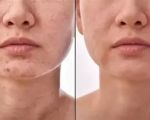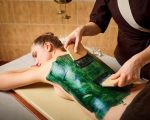- 1-Benefits-of-Spa-Treatments-for-Post-Workout-Recovery
- 2-Key-Spa-Treatments-That-Enhance-Recovery
- 3-Scientific-Insights-Into-Post-Exercise-Spa-Effects
- 4-Real-World-Examples-and-User-Experiences
- 5-How-to-Choose-the-Right-Spa-for-Your-Recovery
1. Benefits of Spa Treatments for Post-Workout Recovery
After intense physical activity, the body undergoes various stresses that lead to muscle fatigue, soreness, and sometimes inflammation. Integrating spa treatments into your post-workout routine offers a natural, holistic way to accelerate recovery. These treatments not only soothe aching muscles but also promote mental relaxation, reduce stress hormones, and improve circulation—factors essential for muscle repair and enhanced performance in subsequent workouts.
Many athletes and fitness enthusiasts have discovered that spa therapies create an environment where both mind and body can heal more efficiently. For example, soaking in warm mineral baths can loosen tight muscles, while targeted massages help flush out metabolic waste accumulated during exercise. This comprehensive approach ensures a faster and more comfortable recovery, which ultimately supports consistent training and better results.
1.1 Physical Restoration Through Enhanced Circulation
The role of improved blood flow cannot be overstated. Spa treatments such as hydrotherapy and massages stimulate circulation, ensuring oxygen and nutrients reach muscle tissues faster. This process speeds up the repair of micro-tears caused by intense exercise and reduces lactic acid buildup, which is often responsible for post-exercise stiffness and discomfort.
1.2 Psychological Benefits for Sustained Motivation
Beyond the physical effects, spa treatments deliver psychological relief by decreasing cortisol levels and elevating mood-enhancing hormones like serotonin. This mental reset is crucial for maintaining motivation and preventing burnout, particularly for those engaged in high-frequency training regimens.
2. Key Spa Treatments That Enhance Recovery
Not all spa treatments are created equal when it comes to post-workout recovery. Understanding which therapies provide the most benefit can make a significant difference in your recovery strategy.
2.1 Deep Tissue Massage
This therapy targets deeper layers of muscle and connective tissue, effectively alleviating chronic tension and muscle knots. Athletes often report increased range of motion and decreased soreness after deep tissue sessions.
2.2 Hydrotherapy Baths
Alternating between hot and cold water baths has been shown to reduce inflammation and improve muscle recovery. The contrasting temperatures stimulate blood vessels, promoting quicker healing and reducing delayed onset muscle soreness (DOMS).
2.3 Aromatherapy and Relaxation Techniques
Incorporating essential oils like eucalyptus or lavender during treatments can enhance relaxation and reduce stress, creating a calming atmosphere that supports overall recovery.
3. Scientific Insights Into Post-Exercise Spa Effects
Recent studies have provided scientific backing for many spa therapies traditionally used in athletic recovery. Research confirms that massage reduces inflammation markers and muscle swelling, while hydrotherapy helps regulate heart rate and decrease perceived pain. These effects contribute to quicker readiness for subsequent physical activity and lower risk of injury.
Moreover, the mind-body connection emphasized in spa environments triggers parasympathetic nervous system activation, facilitating rest and digestion processes vital for recovery. This physiological response is especially important after heavy workouts, when the body needs to shift from a state of exertion to repair.
4. Real-World Examples and User Experiences
Professional athletes frequently incorporate spa treatments into their routines. For instance, Olympic swimmers often utilize hydrotherapy pools combined with massage therapy to maintain peak performance during intensive training cycles. One notable example is Michael Phelps, who famously used ice baths and massage for muscle recovery during his competitive years.
On a more relatable scale, many fitness enthusiasts share stories about how regular visits to spas helped them overcome chronic post-workout pain and stay consistent with their fitness goals. User reviews often highlight the personalized care and expert guidance available at spas, which greatly enhance the overall recovery experience.
5. How to Choose the Right Spa for Your Recovery
When selecting a spa to support your post-workout recovery, it’s essential to consider the quality and range of services offered, the expertise of therapists, and the facility’s ambiance. Look for spas that specialize in sports recovery or have dedicated programs designed around athletic needs.
At Spa, you can find tailored treatments and professional advice perfectly suited for your recovery journey. Their curated selection ensures access to the best therapies, from deep tissue massage to hydrotherapy, all aimed at helping you bounce back faster and feel revitalized.
Ultimately, integrating spa treatments into your recovery plan can be a game-changer, providing not just physical relief but also mental rejuvenation, so you stay motivated and injury-free over the long haul.








